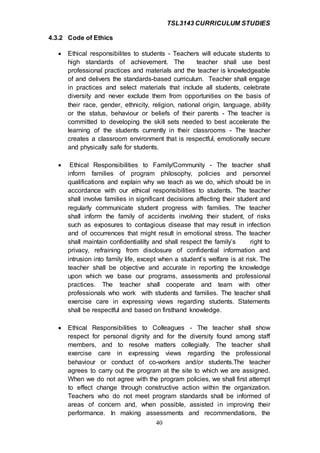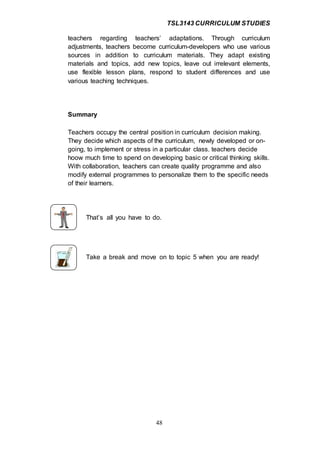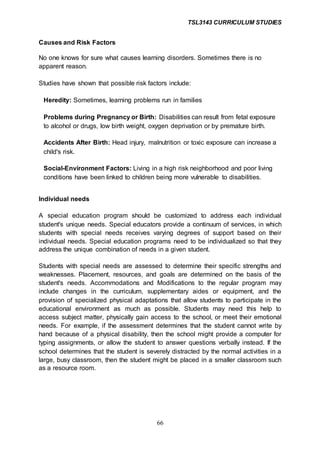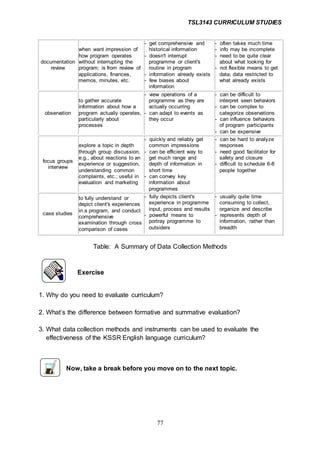This document provides an overview of key concepts and issues related to curriculum studies. It defines curriculum and differentiates between types of curriculum such as planned/intended, enacted, and hidden curriculum. It also discusses forces that influence curriculum construction such as political, economic, and social forces. The document then examines concerns from different stakeholders in the Malaysian context and provides examples of special interest groups that influence curriculum decisions.
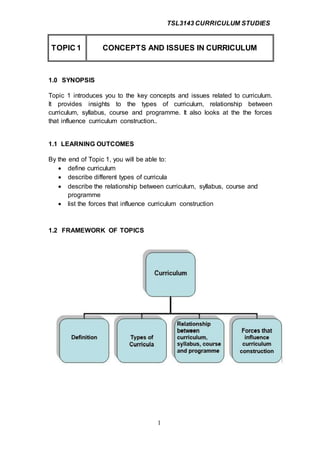


![TSL3143 CURRICULUM STUDIES
4
How the educational system is organised (context).
It is a structured plan of intended learning outcomes, involving knowledge,
skills, behaviour and associated learning experiences organised as a
sequence of events that a student acquires through education and training.
How we conceive of the curriculum is important because our conceptions and
ways of reasoning about curriculum reflect how we think, study and act on
the education made available to students. In short, how we define the
curriculum reflects our assumptions about the world (Cornbleth, 1990).
Tutorial Task
In one/two sentences, define the term ‘curriculum’.
1.2.2 Planned, Enacted and Hidden Curriculum
Planned Curriculum (Overt/Explicit/Intended)
The overt curriculum is the open, or public, dimension and includes
current and historical interpretations, learning experiences, and
learning outcomes.
the intended curriculum is captured most explicitly in state content
standards.
statements of what every student must know and be able to do by
some specified point in time. What students are supposed to learn.
Openly discussed, consciously planned, usually written down,
presented through the instructional process
Textbooks, learning kits, lesson plans, school plays etc.
Hidden Curriculum (Invisible/Covert)
A hidden curriculum is a side effect of an education, "[lessons] which
are learned but not openly intended” such as the transmission of
norms, values, and beliefs conveyed in the classroom and the social
environment. Any learning experience may teach unintended lessons.
The processes…the “noise” by which the overt curriculum is
transmitted
“they are also learning and modifying attitudes, motives, and values in
relationship to the experiences…in the classroom.”
The nonacademic outcomes of formal education are sometimes of
greater consequence than is learning the subject matter.](https://image.slidesharecdn.com/08sessionscontent-160618024150/85/Curriculum-Studies-4-320.jpg)




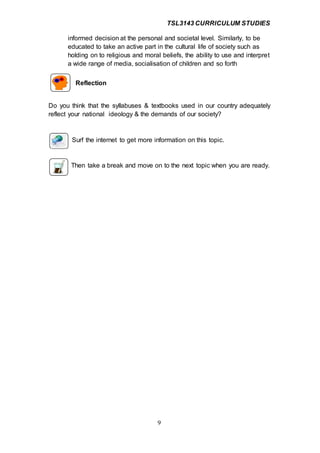





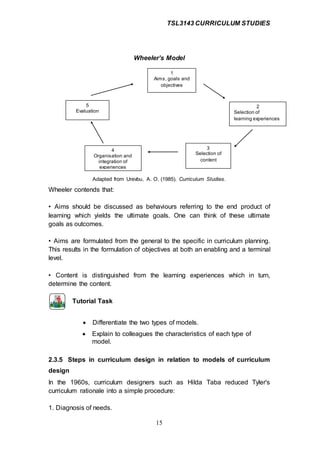










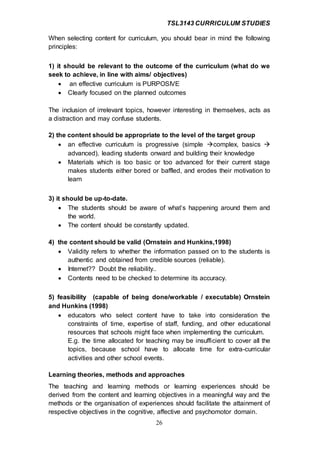

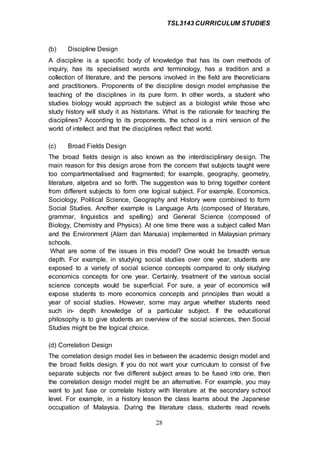







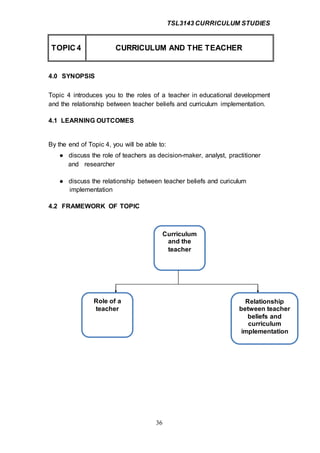

![TSL3143 CURRICULUM STUDIES
38
Hence, professional development of teachers is an important factor
contributing to the success of curriculum implementation. To what extent
have teacher education programmes required prospective teachers to study
curriculum development? [ Did we study curriculum development in our
training as a teacher? ] Certainly an adequate teacher education programme
should include curriculum development (both the theory and the work of
curriculum development) if teaching is to be a profession and if educational
opportunities for learners are really to be improved.
Some topics to be addressed in designing professional development
opportunities for teachers who are implementing a new curriculum:
Programme philosophy: It is important for teachers to understand both
the philosophy behind the programme as well as how the new
programme may impact students, parents, administrators and other
stakeholders.
Content: Teachers may find the curriculum introduces content with
which they are unfamiliar, which they have not taught for a while, or
which is familiar but presented in an unfamiliar way. For example,
using a problem- solving approach rather than a topical approach.
Pedagogy: Teachers need opportunities to become familiar with the
new programme's pedagogical approach. They may need to work on
particular teaching skills emphasised in the new programme, such as
teaching of values, or perhaps to become familiar with a tool such as
Components of the programme: Teachers will need opportunities to
learn about the components of the new programme early in the
implementation phase. For example, the new programme might place
greater emphasis on school-based assessment while teachers are
more accustomed to national or centralised assessment.
Factors influencing the implementation of a curriculum in schools:
Factors Description
School ethos
Adequacy of
resources
Overall school beliefs towards the new curriculum.
Status of the curriculum as viewed by staff,
administrators and community; e.g. school
administration recognises the importance of the
subject in the overall school curriculum.
Adequacy of equipment, facilities and general
resources required for implementing a new](https://image.slidesharecdn.com/08sessionscontent-160618024150/85/Curriculum-Studies-38-320.jpg)

